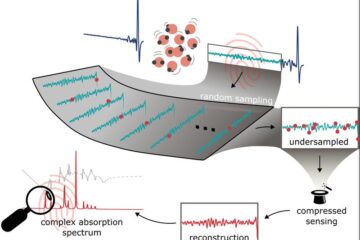Early Universe was packed with mini black holes

A research group at Cambridge think that the universe might once have been packed full of tiny black holes. Dr Martin Haehnelt, a researcher in the group led by Astronomer Royal Martin Rees, will present new evidence to support this controversial idea at the Institute of Physics conference Physics 2005 in Warwick.
Most cosmologists believe that supermassive black holes grew up in big galaxies, accumulating mass as time went on. But Haehnelt says there is increasing evidence for a different view – that small black holes grew independently and merged to produce the giants which exist today.
Haehnelt points to evidence from recent studies of the cosmic microwave background (CMB). This radiation, sometimes called “the echo of the big bang” has been travelling unaltered through space since the universe was just 400,000 years old. At that moment the universe cooled through a critical point, letting CMB radiation travel freely for the first time – as though a cosmic fog had lifted. But new evidence shows that 10 to 15 percent of this radiation has been scattered since then. This indicates a re-warming of the universe which nobody had expected.
Haehnelt explains that this could indicate an era in which small black holes were commonplace. “Matter accreting around a black hole heats up,” he explains, “and this heating could be a sign that small black holes were widespread in the Universe at that time.”
If small black holes merged to form the supermassive variety found at the centres of galaxies, there could be telltale evidence. Such a merger begins with two black holes going into orbit around each other, spiralling ever closer together. In the cataclysmic blast of energy when they finally merge, any asymmetry can send the resulting black hole flying off into space. “If this happened,” says Haehnelt, “we might find the occasional galaxy with its central supermassive black hole missing.”
The evidence is by no means conclusive. Until it is, the CMB results will remain a source of heated debate.
Dr Martin Haehnelt is a Reader in Cosmology and Astrophysics at the Institute of Astronomy in the University of Cambridge.
Media Contact
All latest news from the category: Physics and Astronomy
This area deals with the fundamental laws and building blocks of nature and how they interact, the properties and the behavior of matter, and research into space and time and their structures.
innovations-report provides in-depth reports and articles on subjects such as astrophysics, laser technologies, nuclear, quantum, particle and solid-state physics, nanotechnologies, planetary research and findings (Mars, Venus) and developments related to the Hubble Telescope.
Newest articles

Molecular Fingerprint Beyond the Nyquist Frequency
Ultrafast laser spectroscopy allows the ascertainment of dynamics over extremely short time scales, making it a very useful tool in many scientific and industrial applications. A major disadvantage is the…

High-energy-density aqueous battery based on halogen multi-electron transfer
Traditional non-aqueous lithium-ion batteries have a high energy density, but their safety is compromised due to the flammable organic electrolytes they utilize. Aqueous batteries use water as the solvent for…

First-ever combined heart pump and pig kidney transplant
…gives new hope to patient with terminal illness. Surgeons at NYU Langone Health performed the first-ever combined mechanical heart pump and gene-edited pig kidney transplant surgery in a 54-year-old woman…





















